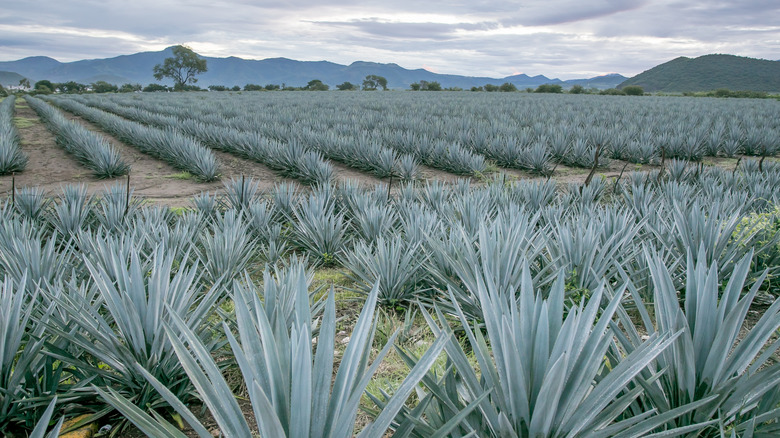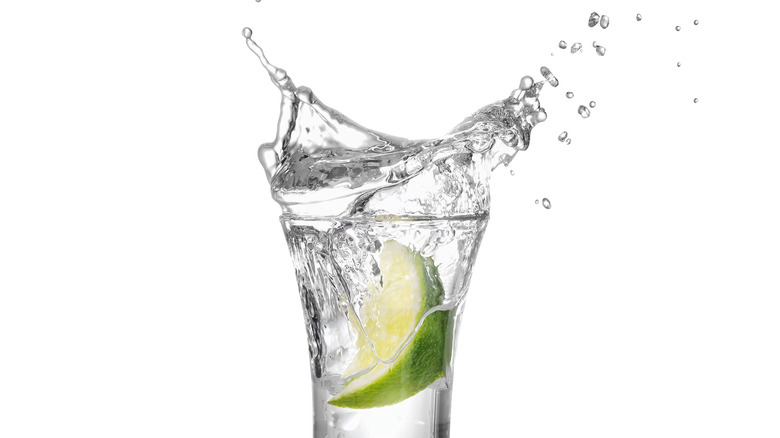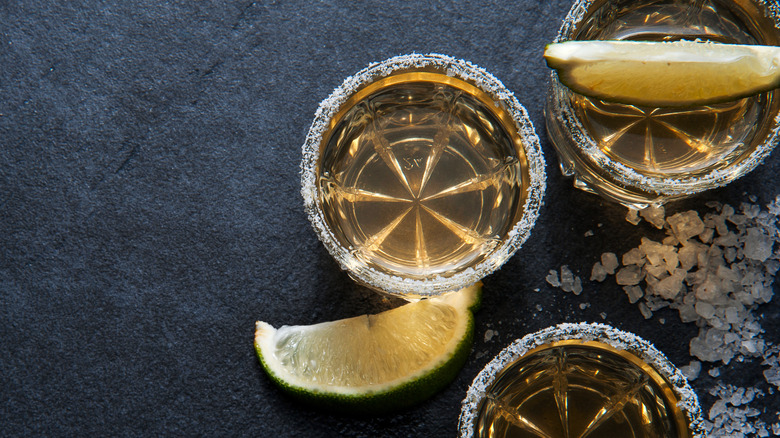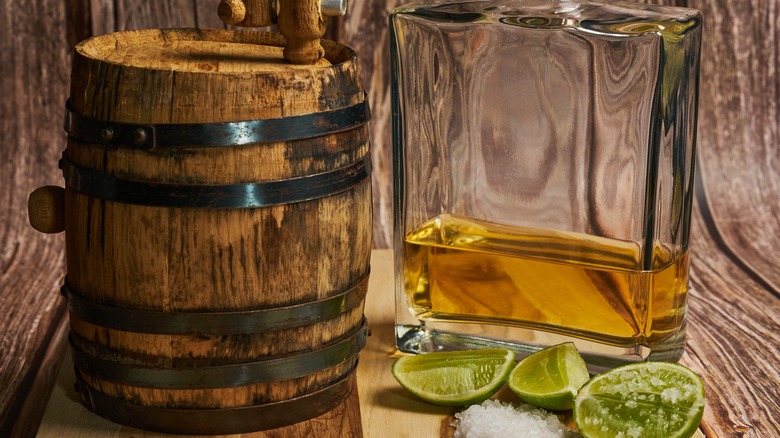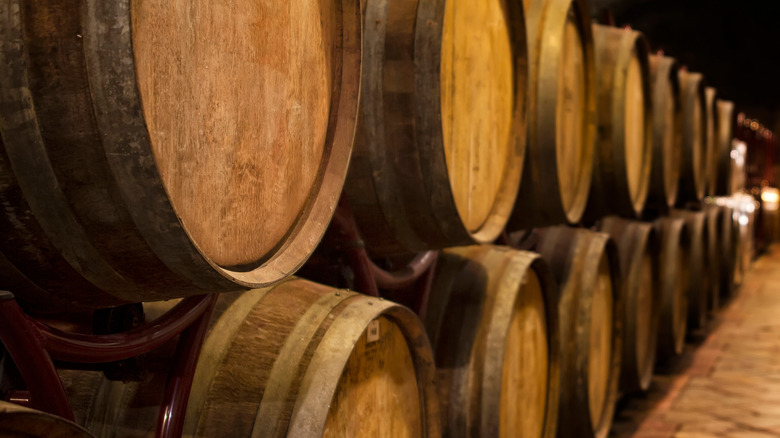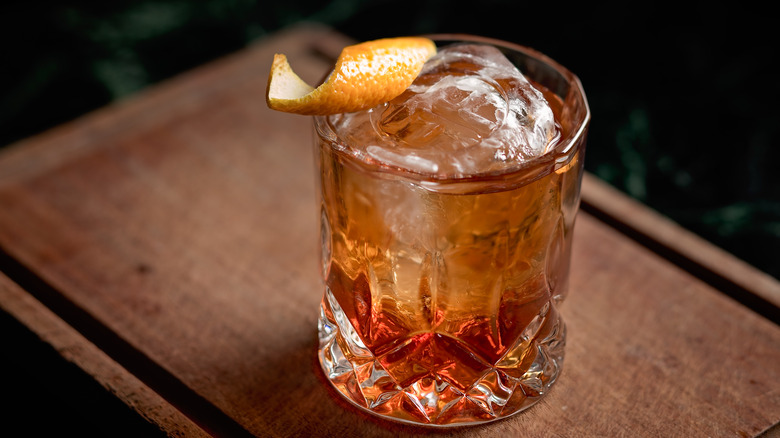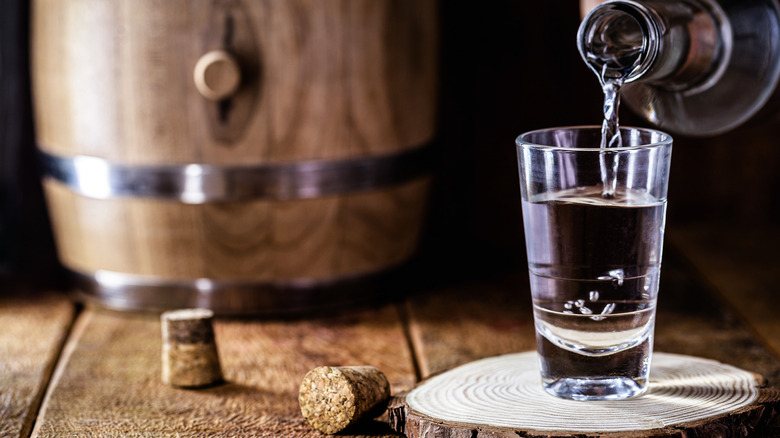6 Types Of Tequila And What Makes Them Unique
To many, the ultimate Mexican spirit and an absolute symbol of national identity, tequila hails from the Blue Agave fields that sprawl around the Tequila Volcano in the state of Jalisco. The term "Blue Agave" is not just poetic — it's part of what makes tequila a unique spirit. From the more than 200 species of agave plants that exist, only one can be used to produce tequila: Tequilana Weber, or Blue Agave.
According to the Tequila Regulatory Council (TRC), tequila must be prepared from material extracted on the premises of an authorized manufacturer located within the territory specified in the Denomination of Origin Tequila. Aside from Jalisco, the other four states in Mexico that boast an Appellation of Origin include Nayarit, Michoacán, Guanajuato, and Tamaulipas (via Tequila is Mexico).
The TRC also states that tequila is made from the cooked heart of the agave, producing honey and pulp that are extracted and blended with no more than 49% of other sugars (such as brown sugar, glucose, or molasses). Afterward, it's fermented and distilled in stainless steel stills. If diluted and bottled at the end of the first distillation, we obtain "tequila ordinario," or standard tequila. In contrast, tequila that results from a second distillation is called "tequila blanco," or white tequila. But several other processes can be carried out for tequila, all of which we'll delve into for this article.
White or Silver Tequila
Transparent, but not necessarily colorless, blanco or white tequila (also known as plata or silver) results from a second distillation after production. Its alcoholic content can also be adjusted with dilution water, according to the TRC. This liquid is bottled right after distillation, and the lack of contact with the oak allows its pure color, aromas, and flavors to shine through. This refined flavor is the primary reason many say that white tequila is the purest expression of the spirit and should be enjoyed neat or on the rocks. It's also the most essential ingredient when preparing a top-notch margarita.
Speaking of the classic margarita, Patrón Silver, with its smooth taste and aromas of fruit and citrus, is an excellent margarita mate. Espolón Blanco is your best bet for white tequila-based cocktails in general, with notes of tropical fruits and spice, while the small-batch, smooth-bodied Casa Dragones Blanco is perfect for enjoying on the rocks. Its fresh, herbal notes need nothing more than a twist of lime.
Joven or Gold Tequila
When you blend white/silver tequila with aged or extra aged tequila, the result is joven (young) or gold tequila, which is aged and adjusted with dilution water. However, this spirit can also be blended with natural oak extract, sugar syrup, or caramel color to achieve the desired product, which results in some subpar tequila brands in the marketplace. When on the hunt for a good quality gold tequila, make sure the blend includes a legit aged tequila, not just cheap coloring to do the trick.
That said, there are plenty of great gold tequilas to choose from, like Casa Dragones Joven, the label that launched this prestige brand to fame. With a silky texture, sweet notes of cooked agave on the nose, and a pleasant taste of vanilla, spice, and pear, this blend of blanco and extra añejo tequila — aged in American oak barrels — is excellent for sipping neat or pairing with a fine meal.
Reposado or Aged Tequila
After resting for at least two months in oak or white oak barrels, aged or reposado tequila is well-known for its natural and complex flavor. This aging process provides a certain softness and sweetness, making this style of tequila mellow and approachable.
In this category, Don Julio Reposado is a favorite. It spends eight months in American white oak barrels, resulting in an amber-colored liquid with notes of lemon, spice, ripe fruit, vanilla, and cinnamon. This sophisticated liquor has a smooth finish, with hints of dried apple, making it ideal for enjoying on the rocks.
You also can't go wrong with Herradura Reposado, either. Beloved since 1974, it's aged for 11 months and boasts a deep amber color and notes of cooked agave and vanilla. It's perfect on its own, slightly chilled, but also works excellent in citrusy cocktails that let its sweet notes shine.
Añejo or Extra Aged Tequila
To earn the name añejo or extra aged, a tequila must have aged for at least a year in French or white oak barrels. According to the TRC, the barrels cannot contain more than 600 liters, and their alcoholic content can be adjusted with dilution water. While it has more robust notes of wood, it is smoother on the palate. Considered a sophisticated tequila, extra aged tequila should be sipped slowly and never as a shot. Ideally, this rule should apply to all tequilas, but if you do shots, you might as well do them with silver or gold tequila. It won't be as terrible a sin.
When it comes to añejos, we can't help but fall into Don Julio's arms again. Our recommendation is the peerless Don Julio 1942. Named after the year where Don Julio González founded the brand (at the age of 17), this gorgeous liquid is made from agave aged in American white-oak barrels for at least two and a half years. The resulting tequila, with notes of chocolate and caramel on the nose, and warm oak, agave, and vanilla on the palate, comes in an equally appealing tall bottle that is truly iconic.
Extra Añejo or Ultra Aged Tequila
This category includes some of the most prized tequilas on the market. An ultra aged tequila is aged for no more than three years in a French oak or white oak cask not surpassing 600 liters in capacity. Like other tequilas, its commercial alcoholic content can be adjusted with dilution water, according to the TRC.
Generally speaking, ultra aged tequilas boast notes of vanilla, wood, and spice, courtesy of the time they spend in direct contact with the barrel, which also has a noticeable effect on their aroma. Because of these traits, whisky lovers can find plenty to love in ultra aged tequilas. In fact, they are fantastic in cocktails that are usually whisky-based, like an Old Fashioned or Manhattan.
An excellent example is the Clase Azul Tequila Ultra. Presented in a luxurious black ceramic bottle, this spirit is aged for five years, first in American whiskey casks and then in Spanish sherry casks. This "extra añejo" shows a deep amber color and a full-body, boasting notes of sherry, oak, maple syrup, and dried plums on the nose, along with vanilla and cinnamon on the palate.
Cristalino Tequila
What happens if you take aged tequila and put it through a slow, careful filtering process — usually using activated charcoal — to remove the colors that result from its time spent inside the barrel? You get cristalino, a crystal-clear tequila that has gained popularity over the last few years because of its exciting combination of characteristics: the bright looks of silver tequila and the richness of an aged one.
To get a taste of the best of both worlds, check out 1800 Cristalino. This liquid is aged in American and French oak barrels for 16 months, blended and finished in Port wine casks for an additional six months, and carefully filtered, resulting in a complex yet silky spirit presented in a beautiful, kaleidoscopic bottle. Its notes of honey, vanilla, wood, and cooked agave make it perfect for slow sipping.
Another premium option is Dobel Diamante, a triple-threat blend of reposado, añejo, and extra añejo that has been aged in oak casks and filtered twice. This cristalino has delightful, sweet notes of maple, honey, and vanilla and is particularly delicious when served chilled. The bottle, by the way, looks pretty cool when it shows a touch of frost.
